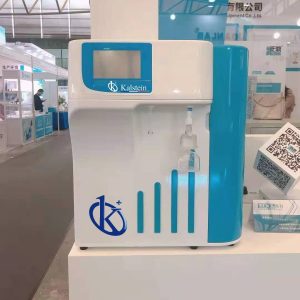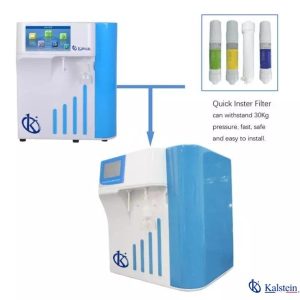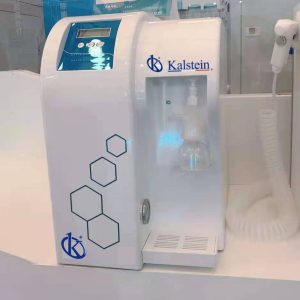Water Purification System
A water deionizing system is a water purification equipment used in
the laboratories, with direct connection to the network and continuous flow.
which performs a filtration of water through mixed bed resins by ion exchange. I mean,
the cation and anion exchange resins are intimately mixed and
contained in a single pressure vessel. Generating as a result that quality
of water obtained from a mixed-bed deionizer, be considerably high.
Deionization of water is a process that is performed when there is a need
immediate distribution of purified water. Deionization should be performed
when the water is close to being used, since the purity of the water is extremely
Alta is rapidly degraded.
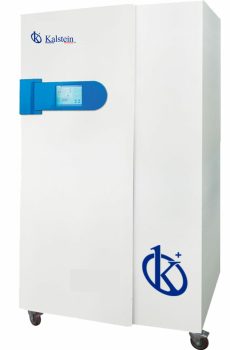
Types of Water Purification System that a Laboratory may need

Water Purification Systems YR59 – YR59-1
Fully automatic and self-diagnostic system monitors and controls working condition.PIN-coded access to software set points...

Water Purification System YR55 / YR55-3
YR Water Purification system is a compact solution that combines the production of pure water and ultrapure water ...

Water Purification System YR54 / YR54-3
YR Water Purification System is a compact solution that combines the production of pure water and ultra-pure water...

Water Purification System YR60-1
YR Water Purification system can produce CAP/CLSI Type I reagent water for clinical analyzer...
Our best-selling Water Purification System
- Fully automatic and self-diagnostic system monitors and controls working condition.
- PIN-coded access to software set points prevents unauthorized changes to operation or system settings.
- Unlike many other systems, Kalstein entire fluid pathway is included in the automated disinfection process ensuring complete sanitization.
- High quality and economical due to disposable integrated purification column design.
- Easy replacement and quick connection.
| Model | YR59 | YR59-1 |
| Particles | (≤0.22μm): ≤1/ml | |
| Output (pure water) | 30L/hr output (pure water) | |
| TOC | ≤30ppb | |
| Bacteria rejection rate | >99% | |
| Weight | 37KG (main unit) 13KG (water tank) | |
| Source | Purewater (Conductivity <20 μs/cm) | |
| Voltage | 230 V, 50 Hz | |
| Resistivity at 25 ℃ | 18.2MΩ.cm | |
| Conductivity at 25 ℃ | 0.055 μs/cm | |
| Flow Rate | 1.5-2.0L/min | |
| Resistivity Cell | 0.01cm -1 | |
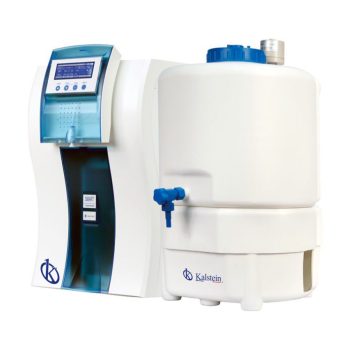
Catalog of Water Purification Systems models on offer
Guides for you to become an expert in Water Purification Systems
Processes for water purification
At present there are several equipment for the treatment and filtration of water. The choice of the most suitable one depends on the user’s need, since each one will leave...
What is an ultra water purifier?
It is a laboratory water ultra-purification equipment. This device is structured by cutting-edge technologies for water purification, in accordance with internationally required specifications...
Different water purification systems
It is essential for the work of laboratories the use of purified water, not only to wash the instruments used in the laboratory, but for the preparation of solutions for non-crucial testing...
Deionization and Reverse Osmosis What are their differences?
The deionizer also removes the ions, however physically, first through a system composed of activated carbon and then through ion exchange columns.
Ion removal can be made complete or partial, as needed. The column is formed by cations and anions and can be regenerated whenever it is saturated, which ensures efficient operation for much longer.
Videos of Water Purification Systems in operation
In this section you will find our purifiers in operation, packaged, receiving service, etc.
Process of using Water Purification Systems
This water is a cation-free liquid such as sodium, calcium, iron, copper, among others, and free anions such as carbonate, fluoride, chloride and others; deionized water can change its pH with ease of storage, according to some experts it is important to know that deionized water by not carrying salts if consumed directly by the human causes harmful anemia, because carbon dioxide easily dissolves and acidifies the water, so it would be dangerous for the body. The use of this water is restricted to laboratories, where loose ions can cause alterations in the required results, there are a large number of applications of this water in industries, research, experiments, other researchers point out that it is a myth that this water is harmful to health, of course it is in limited consumption.


Frequently asked questions about Water Purification Systems from our customers
How to know the prices of Water Purification Systems?
To know the price of the Water Purification Systems we invite you to send us an email with your request using the contact form.
What are the delivery times of Water Purification Systems?
The delivery time of your Kalstein product will depend on the following:
- If the equipment of your interest is in stock or if on the contrary it should be manufactured.
- The type of freight you have chosen may be; air or sea.
- Equipment in stock:
– Delivery Time (Aereo): 15-30 days.
– Delivery Time (Maritimo): 45-60 days.
- Equipment not in stock:
– Delivery Time (Aereo): 30-60 days.
– Delivery Time (Maritimo): 60-90 days.
How to make a purchase of Water Purification Systems?
You can make your purchase through:
- By email: [email protected]
- By phone: +33 (0) 1 78 95 87 02
- Electronic commerce: Through Kalstein's official website in his country.
How does the warranty work?
All Kalstein equipment has a 1-year warranty against manufacturing defects. The warranty does not cover damage caused by a poor installation or operation by the user, transportation defects or uses other than those specified by the manufacturer. Warranty excludes electrical or consumable parts. For more information visit our "terms and conditions" by clicking HERE
At Kalstein we provide our customers with inductions and technical support through new online methods. You can visit our inductions, technical assistance and guidance videos provided by a Kalstein team through our YouTube channel (Kalstein English). HERE
Can I request a quote online?
Of course, you can request a quote for the Kalstein team of interest, directly from our official website. Once you have identified your preferred model, click HERE

